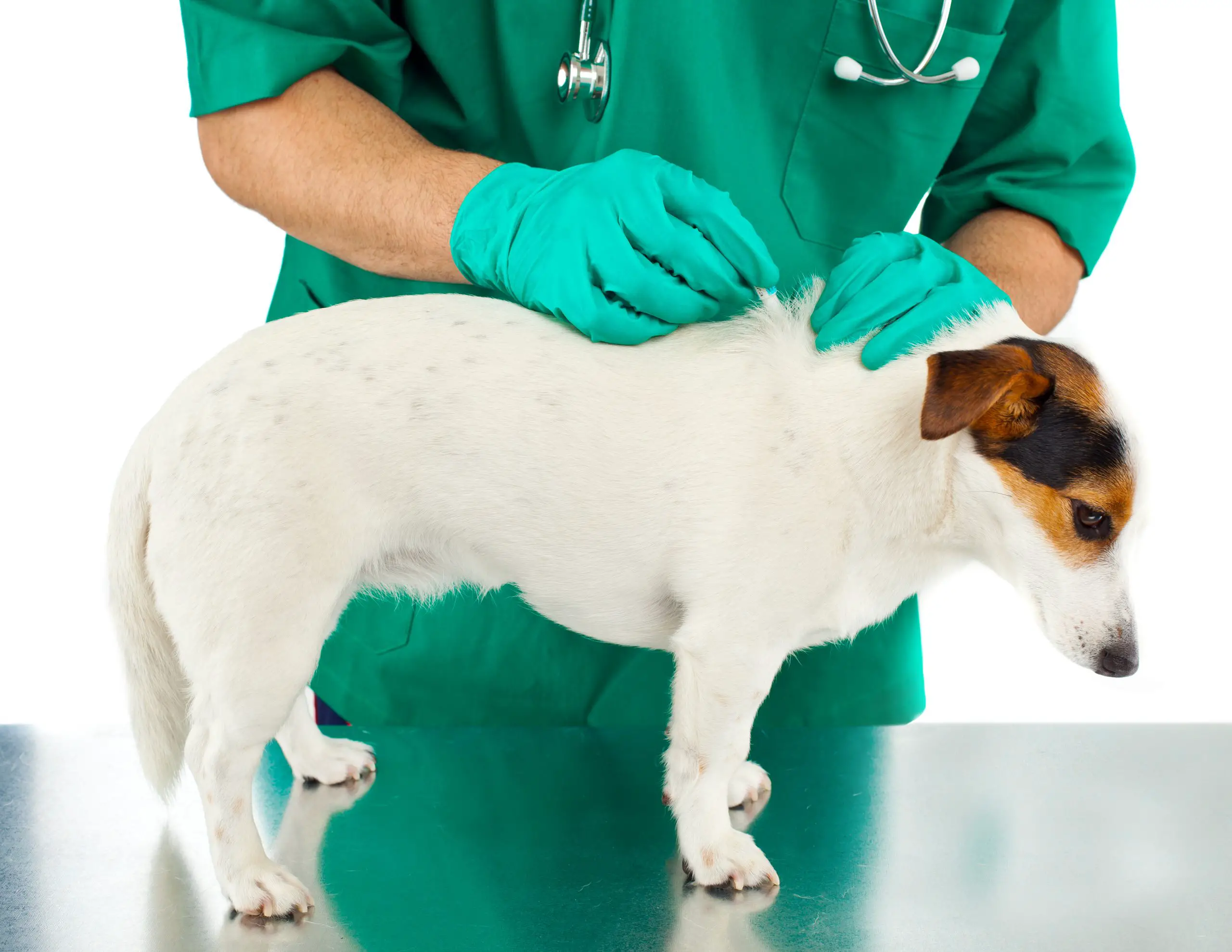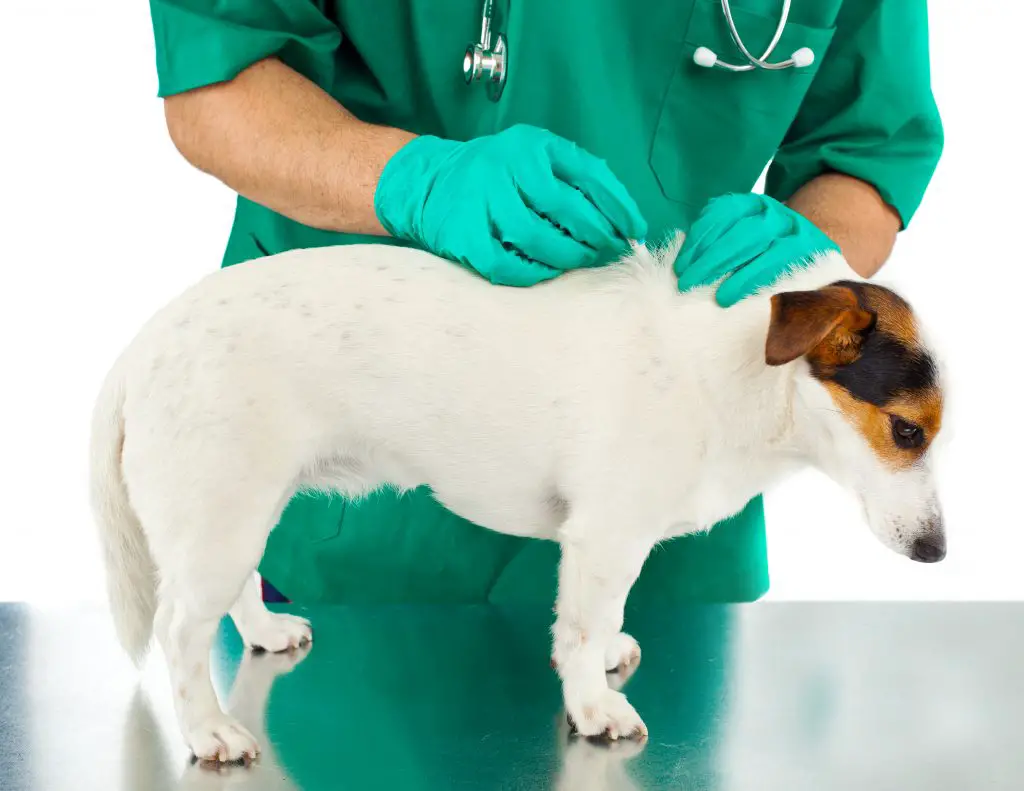Dog Fleas Control – What You Need To Do
Controlling fleas on our dogs isn’t a simple process. After all, while adult fleas spend most of their time living on our pets, their eggs, larva, and pupae are found all over the house. Every flea you see on your dog means hundreds of eggs and larval fleas in the grass outside and in your carpet. That means that a really good flea control program requires you to treat the environment your dog lives in, in addition to your dog.
Flea Control Options
The main steps in a good flea control program involve removing fleas from the indoor and outdoor environments, from your pets, and controlling immature fleas so they don’t develop. There are a number of flea control options that can help you with this.
They include pesticides that kill adult fleas, ones that kill immature fleas, and substances that regulate or inhibit the growth and development of immature fleas. Different products will be better for different people. Be sure to do your research instead of buying the first product you encounter.
The products you choose will be based on how badly infested your pet, home, and property are, as well as how healthy your pet is, how old he or she is, and what size and breed of dog you have. Other factors can include the other pets in your home and family needs.
People with asthma, small children, or other vulnerable members of the household will need to be careful about what anti-flea products they choose. Some products can make people very ill, and may also be bad for other animals in the home. Small pets are particularly sensitive to chemical treatments.
Indoor Flea Control
The first part of controlling fleas indoors involves removing all stages of fleas mechanically. Then, any remaining adults are killed, and immature fleas are treated to prevent them from developing into adults. Begin by vacuuming and washing thoroughly. Any fabric or carpeted surface must be thoroughly cleaned. Vacuum daily in areas that get a lot of traffic, and seal the vacuum bag in a plastic bag, and get rid of it right away.
Then, treat the carpet and other areas with a product that’ll kill adult fleas and keep larva and eggs from growing up. Foggers, sprays, and carpet powders are all available, but make certain that they’re safe to use in your home. Birds, fish, children, and people with respiratory problems are all especially susceptible to pesticide exposure.
Talk to your vet and any appropriate doctors before treating, and get the help of a professional for really serious infestations. Be sure to wash all pet bedding once a week, and treat the bed, as well as the area around it. Also treat your pet carrier, car, basement, garage, and all other areas where your dog spends time. Many people forget these areas.
Outdoor Flea Control
Controlling fleas outdoors is a little trickier than doing it inside. You can’t treat the whole world, after all. What you can do is treat areas where fleas are most likely to happen. These are warm, moist, shaded areas with some kind of organic debris. Of course, pets spend a lot of their outside time in these areas, too. Treat places such as under the porch, the patio, and similar locations, and don’t forget the dog house.
Remember to rake away organic material like grass clippings and straw. This will let flea and tick products work and keep the fleas from having a safe haven. Try to choose environmentally safe treatments that won’t damage the surrounding area or kill desirable insects. The yard will need to be treated every week to three weeks, depending on the product. Don’t spray in situations where runoff could get into waterways, and use all sprays according to the label.
Controlling Fleas On Your Dog
Even immediately after shampooing, spraying, dipping or other treatments, you’re likely to see live fleas on your dog. Don’t be alarmed. It takes a little time for these kinds of products to start working. Plus, different products are more or less safe or effective for your pet.
You can choose from injectables, oral treatments, powders, collars, shampoos, sprays and many more. Remember that all flea control products must be used carefully, and to talk to your vet to make sure that they’re safe. Labeling doesn’t always indicate a safe product, especially for smaller dogs.
Persistence is important when treating your pet. If you need to treat on a regular schedule, such as once a month for many topical treatments, don’t deviate! You’ll allow the fleas to come back just as strong. Protect sensitive areas of your pet when treating, and be sure to talk to your vet about all treatments. That’ll help you make certain that you’re doing the right thing.
Preventing Fleas
Of course, ideally, your pet won’t get fleas at all. It’s possible to prevent flea infestations by using repellents containing certain chemicals, use of insect growth regulators, and treating pets after they’ve been in contact with other animals.
Remember, even a trip to the dog park could result in infestation if your pet hasn’t been treated properly. Groom carefully and regularly to help you see evidence of fleas early, and make sure you keep things clean and tidy. That’ll help you and your dog avoid a big, itchy problem and many of the health issues fleas can cause.


